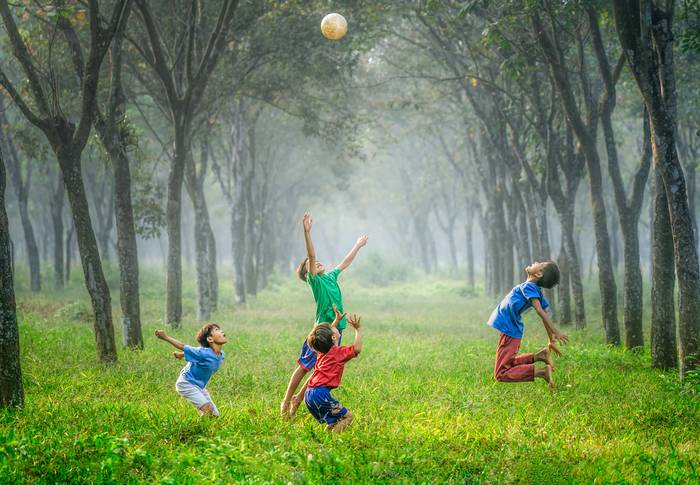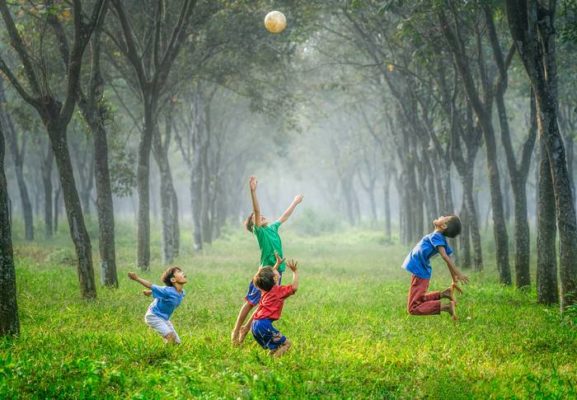

GDP: This brief acronym is believed to represent the sum total of a country’s wealth.
Gross Domestic Product has been used by economists since the end of the last world war to track the runners and riders in the global race for prosperity.
While we may glimpse GDP figures amid TV news graphics and shrug, for politicians and central banks its fluctuations are the stuff of obsession.
“GDP tots up the value of stuff and services produced by a given country to provide a single number used to rank national economies,” says Prof Diane Coyle, Co-Director of the Bennett Institute for Public Policy. “And it has proved to be a hugely powerful incentive to get things done.”
GDP’s reign over macroeconomics has seen millions lifted out of poverty and major reductions to child mortality since the measurement was created by two Cambridge graduates working deep in the UK’s War Cabinet in the 1940s.
However, this fixation has also taken a devastating ecological toll. Vast tracts of the natural world have been wiped out in the name of boosting GDP, and the drumbeat of “goods and services” has been driving global inequality for decades.
In short, GDP is no longer fit for purpose, according to Coyle and her colleague Dr Matthew Agarwala. “The history of GDP is really about whether we can afford to go to war,” says Agarwala. “As an accounting system it excludes calculations that are fundamental not just to economic prosperity but to life on Earth, frankly.”
GDP ignores nature, and everything ecosystems provide – from raw materials to clean air. It ignores the social bonds that tie us to employers and communities, and the trust in institutions vital for generating new knowledge and improving productivity. It ignores the health and skills of entire populations.
“A focus on GDP without proper regard for environmental degradation or inequality has been a disaster for global ecosystems and undermined social cohesion”
Goods and services are easy enough to add up, but how should nations account for less tangible “capital” – be it social, natural or knowledge-based? In setting out to solve this, the Cambridge team has established itself at the forefront of a global revolution in how we define and measure wealth.
The ‘Wealth Economy’ project, led by Coyle and Agarwala at the Bennett Institute, builds on the groundbreaking work of their Cambridge colleague Prof Sir Partha Dasgupta, who has – for decades – led the way in developing statistical economics that goes beyond GDP to include nature and human wellbeing.
“Ecosystems services are absent from most national statistics,” says Dasgupta. “Vast intellectual energy is given to estimating GDP, but there is little data on the biosphere’s capacity to meet human demand for natural goods.”
Beginning in the early 2000s, Dasgupta’s research laid a theoretical foundation that helped to establish the new movement. He served as Chief Scientific Advisor to a series of United Nations reports on “inclusive wealth” over the last decade, and in 2021 he published a landmark 600-page report commissioned by the UK Treasury on the economics of biodiversity.
For Dasgupta, who also led the design of a “green accounting” framework for the Indian government, sustainable economics means national balance sheets that “account fully for the impact of our interactions with nature right across society”.
For example, destroy woodland to construct a shopping centre and GDP will show an increase in produced capital – but not the loss of “natural capital” that absorbs carbon, prevents soil erosion, provides habitat for much-needed pollinators, and so on.
Nature is a gaping hole at the heart of economics that Dasgupta and the Wealth Economy team aim to fill. To do so, they worked closely with the UN Statistics Division on the latest versions of the UN’s System of Environmental Economic Accounting (SEEA), adopted as a global standard last year.
SEEA allows governments and banks to calculate the worth of “natural dividends”, from fish stocks and carbon sinks to the reduced burdens on health services from purified air.
Agarwala has focused on developing a process to value the air filtration that natural ecosystems provide for the updated SEEA, which UN Chief Economist Elliott Harris called a “giant leap in the right direction” when he spoke at a Cambridge-hosted event in late 2020.
With his Cambridge colleague Dr Dmitri Zenghelis, Agarwala has also worked on guidance for the UN that demonstrates how Finance Ministries and Central Banks can use SEEA, and how it can be integrated into the macroeconomic models used by national governments the world over.
For Agarwala, the pandemic has demonstrated the massive risks we take by omitting nature from economic calculations. “Protecting habitats reduces zoonotic spillover. It’s just one example of the huge cost to economies – not to mention our species – of failing to incorporate natural capital in our thinking.”
For Dasgupta, who also led the design of a “green accounting” framework for the Indian government, sustainable economics means national balance sheets that “account fully for the impact of our interactions with nature right across society”.
For example, destroy woodland to construct a shopping centre and GDP will show an increase in produced capital – but not the loss of “natural capital” that absorbs carbon, prevents soil erosion, provides habitat for much-needed pollinators, and so on.
Nature is a gaping hole at the heart of economics that Dasgupta and the Wealth Economy team aim to fill. To do so, they worked closely with the UN Statistics Division on the latest versions of the UN’s System of Environmental Economic Accounting (SEEA), adopted as a global standard last year.
SEEA allows governments and banks to calculate the worth of “natural dividends”, from fish stocks and carbon sinks to the reduced burdens on health services from purified air.
Agarwala has focused on developing a process to value the air filtration that natural ecosystems provide for the updated SEEA, which UN Chief Economist Elliott Harris called a “giant leap in the right direction” when he spoke at a Cambridge-hosted event in late 2020.
With his Cambridge colleague Dr Dmitri Zenghelis, Agarwala has also worked on guidance for the UN that demonstrates how Finance Ministries and Central Banks can use SEEA, and how it can be integrated into the macroeconomic models used by national governments the world over.
For Agarwala, the pandemic has demonstrated the massive risks we take by omitting nature from economic calculations. “Protecting habitats reduces zoonotic spillover. It’s just one example of the huge cost to economies – not to mention our species – of failing to incorporate natural capital in our thinking.”
Coyle argues that COVID-19 has “shone a brutal light” on existing inequalities, and the need for greater societal resilience. “Without adequate buffer stocks of natural or social capital, whether that is proximity to clean air and green space or investment in adaptable skills or communities with strong networks, there is no resilience,” she says.
“The pandemic, alongside the consequences of climate and biodiversity crises, has opened many people’s eyes to the fact that there is a fork in the road.”
In the autumn of 2020 the Wealth Economy team published their blueprint for post-pandemic investment in a world where structural and regional inequality is rife, and the wealth of nations needs to mean far more than simply GDP.
The report, ‘Building Forward’, lays out six “interconnected capitals”: natural, human, social, knowledge-based, institutional and physical – the foundations for a new economic model of inclusive wealth. “Most people already understand that prosperity is not simply material consumption,” says Agarwala.
“Access to education, healthcare, justice, as well as the degree to which people are protected from risks of conflict, destitution or social upheaval – these are all fundamental to prosperity. The public understands this, and it is past time that economics caught up,” he argues.
Geographical divides have opened up in the UK as major industries – and the areas reliant on them – declined. People in towns across the midlands, north and west saw opportunities dwindle, and health and living standards diminish.
The UK government’s aim to ‘Level up’ the country saw the recent launch of a white paper that puts forward strategies for tackling location-based inequality. Referencing the Cambridge team, it recommends a framework closely modelled on the six capitals, calling the engine of regional growth a “six-cylinder one”.
Even before COVID-19, the UK economy had suffered years of stagnation, says Coyle – a “lost decade” due in part to regional inequalities compounded by austerity policies. “No economy can increase its productivity as a whole if only certain cities or places are thriving. It needs to be more broadly-based.”
In 2018, Coyle “trail blazed” a new local industrial strategy in Manchester, according to the city’s Combined Authority – spearheading an analysis that was accepted in its entirety by the UK Treasury. Coyle also served as a Commissioner for an economic review of Cambridge and Peterborough, influencing how local leaders approached “natural capital”.
She has now has taken a major role in the recently established Productivity Institute, a result of the largest investment in economic and social research in the UK to date. Coyle leads the work on “knowledge capital”: the ideas that drive progress, and the connections that conjure them.
“We want to better understand the links between productivity and the things that are vital but hard to pin down,” she says, “whether that’s how businesses adopt new technologies or the role of social networks in determining how well different areas of the economy perform.”
Recent years have seen little progress on measuring – or even defining – the skills and networks of trust that form social and human capital, despite a mass of evidence for the crucial role they play in prosperity. The Wealth Economy team aim to change that – along with the face of economics.
They argue that the key to a sustainable future lies in statistics fit for navigating this century’s coming storms: biodiversity loss, inequality, climate change, automation. “Statistics are the lens through which we see the world,” Coyle says. “Twenty-first century progress cannot be measured using twentieth century statistics.”
from ScienceBlog.com https://ift.tt/vc2SzbB



No comments:
Post a Comment